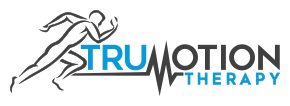August 7th, 2021
Strength training does not need to be complicated or time consuming, but it cannot be neglected.  Unfortunately, strength training is an afterthought for most runners and is only done when an injury needs to be rehabbed.  
Seeing your monthly mileage on Strava go up is so satisfying, and don’t even get me started on segments!  It’s all instant gratification as you literally see your progress, whereas strength training may feel like a slower burn.    
Why should i strength train?
Nearly 50% of runners are injured each year.  Most of those injuries can be attributed to overtraining and associated muscle weakness.  (Click here to learn more about Running Injuries.)  
A study published in Medicine and Science in Sports and Exercise found the only predictor of injuries in basketball and track and field athletes at the end of their season was hip external rotator strength (think glutes). In another study, athletes that were unable to generate 20% of their body weight in a seated hip rotator strength test were 7x more likely to tear their ACL.  
Imagine your body’s ability to handle the physical demands of running as a cup.  The more you run the more water is poured into the cup.  You can only pour so much water into the cup before it overflows and you become injured.  
Strength training gives you a bigger cup!
How much should i be doing?
2-3 times per week is usually enough.  The timing of your strength sessions is up to you.  I prefer to do them after a run, because I’m already warmed up.  I recommend not doing it before a run, however.  Running is your priority, and overcooking your legs with squats prior to running is not a good idea.  
The following exercises are some of my favorite running-specific exercises.  Modifications and set/rep recommendations are provided when necessary.  
Bulgarian Split Squats
Also called Rear Foot Elevated Split Squats, this squat variation mimics the running stride quite well by building strength and confidence in single leg stance.  This exercise strengthens the quads and glutes and is great for preventing knee pain. 
Be sure to have your front foot far enough in front of you, so when at the bottom of the motion the shin is close to vertical.  Press through the ground with your front foot as you lift yourself up.
Perform 3 sets of 15 reps on each side.  If body weight is not challenging enough for you, hold a dumbbell or kettlebell to your chest or a dumbbell by your sides in each hand.  
Glute Circuit
Glute strength is vital for lower back, hip, and knee health.  Weak glutes can cause compensations in your gait placing excessive stress on other tissues eventually leading to injury.  
Alternate sets of one of the bridge variations and Lateral Band Walks.  
Elevated Single-Leg Glute Bridge
Perform 3 sets of 10 reps on each side
This exercise can be scaled down by 1) Not using the band  2) Using the band but putting both feet on the step 3) Getting rid of the step altogether as shown in the video below.  
Lateral Band Walk with Squat 
As soon as you are done with whichever glute bridge variation you chose, stand up and knock out a set of these. You should be able to smell your glutes burning after this one. 
Perform 3 sets of 10 reps down one direction and back the other direction. 
Heel Raises
Heel raises strengthen a group of muscles called your ‚Äúplantar flexors.‚Ä̬† Plantar flexors are responsible for 50% of your forward propulsion while running.¬† The calf and achilles tendon are powerful plantar flexors and are commonly injured in runners.¬† During the push-off phase of running your achilles is exposed to forces nearly 8x body weight!¬† Being strong in these areas is important.¬†¬†
There are ways to make heel raises easier and harder. Here is an easier variation that uses a step to take some of the weight out of the working leg.  
Another easy variation is to stand with your feet side-by-side and the balls of your feet on the edge of a step.  Slowly raise and lower your heels letting them drop below the plain of the step.  
If you can do 20 repetitions of the above variation without issue, switch to standing on one foot only.  Be sure not to compensate by using momentum.  Isolate the movement to your ankle. 
If 15-20 repetitions of a single leg heel raise are too easy, begin adding weight.  Weight can be added by holding a dumbbell in one hand or wearing a weighted backpack.  
There are two main muscles in your calf that need to be strengthened individually.¬† The gastrocnemius is the ‚Äúmeaty‚ÄĚ portion of the calf and needs to be worked with straight leg heel raises.¬† The soleus sits a little further down the calf and needs to be strengthened with a slightly bent knee.¬†¬†
Core
Core work should mimic the demands of running.¬† During the running stride as one hip and leg swing forward the opposite shoulder and arm do the same.¬† This is referred to as the ‚Äúcross crawl pattern.‚Ä̬† Try running with the same arm and leg swinging forward at once.¬† It‚Äôs awkward and nearly impossible.¬†¬†
This cross crawl pattern creates a twisting motion in the torso, and it is the core muscles’ job to resist the twist.  
My favorite core exercise for runners is the Half-Kneeling Pallof Press.  During this exercise you’re in a lunge position, which closely mimics midstance of the running stride.  As you press the band forward the resistance is attempting to pull you into rotation as your core muscles resist that motion.  
Perform 3 sets of 15 reps on each side with a resistance that makes the last few reps challenging.  
If you don’y have the proper set-up for the Half-Kneeling Pallof Press, you can do Rotating Planks instead.
Perform 3 sets to moderate muscle fatigue or until form starts to break down.
Upper Body
Although the focus of this article is on my go-to lower body exercises for runners, the upper body should not be neglected.  Similar to the lower body exercises, upper body work does not require fancy equipment.  Keep it simple with push-ups, pull-ups, and band work. 
If you find any of these exercises painful or simply need guidance with your strength routine, we would be happy to help.  Click here to schedule and appointment!





